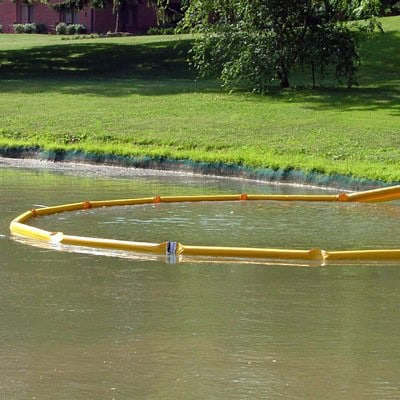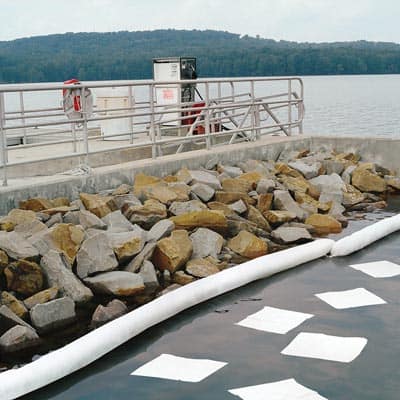Oil spills can be catastrophic, causing extensive damage to the environment, wildlife, and local communities. Being prepared for an oil spill emergency is crucial for minimizing these impacts and ensuring a rapid, effective response. This article will guide you through the essential components of oil spill emergency preparedness, including the tools and training necessary for effective response.
Understanding Oil Spill Preparedness
Oil spill preparedness involves a combination of planning, training, and equipment to effectively respond to an oil spill. It requires coordination between various stakeholders, including government agencies, industry operators, and local communities. The goal is to minimize environmental damage and protect public health and safety.

The Importance of Oil Spill Response Plans
An oil spill response plan is a detailed document that outlines the procedures and resources required to respond to an oil spill. It serves as a blueprint for action, ensuring that everyone involved knows their roles and responsibilities.
Key elements of an oil spill response plan include:
- Identification of Potential Spill Sources: Understanding where spills are most likely to occur helps prioritize prevention and response efforts.
- Response Strategies: These strategies outline the steps to take in the event of a spill, such as deploying containment booms and initiating cleanup operations.
- Resource Inventory: An inventory of available equipment and personnel ensures that resources can be mobilized quickly.
- Communication Protocols: Clear communication channels are essential for coordinating response efforts and providing updates to the public.
Conducting Spill Response Training
Training is a critical component of oil spill preparedness. Regular drills and exercises help ensure that response teams are familiar with the procedures and equipment outlined in the response plan.
Spill response training should cover:
- Equipment Use: Training on how to deploy and operate spill containment booms, oil absorbent booms, and other response equipment.
- Safety Protocols: Ensuring that all responders are aware of safety procedures to protect themselves and others during a spill response.
- Scenario-Based Drills: Practicing response to different spill scenarios helps teams prepare for various situations they may encounter.
Essential Tools for Oil Spill Response
Having the right tools is crucial for effective oil spill response. Here are some key pieces of equipment that should be part of any preparedness plan:
Spill Containment Booms
Spill containment booms are barriers placed on the water’s surface to prevent the spread of oil. They are essential for controlling the spill and protecting sensitive areas such as shorelines and wildlife habitats.
There are different types of booms, including:
- Inflatable Booms: These are easy to transport and deploy, making them ideal for rapid response.
- Rigid Booms: More durable and effective in rough waters, but they require more time to deploy.
Spill Containment Berms
Spill containment berms are temporary barriers used to contain spills on land. They are particularly useful for preventing oil from reaching water sources or environmentally sensitive areas.
Oil Absorbent Booms
Oil absorbent booms are used to absorb oil from the water’s surface. Made from materials that attract and retain oil, they are a critical tool for cleaning up spills and preventing further environmental damage.
Effective Communication During an Oil Spill
Communication is a vital aspect of oil spill response. Clear and timely communication ensures that all stakeholders are informed and can coordinate their efforts effectively.
Establishing a Communication Plan
A communication plan should be part of the oil spill response plan, detailing how information will be shared among responders, government agencies, and the public. Key elements include:
- Contact Information: A list of key contacts, including response team members, government agencies, and local stakeholders.
- Information Dissemination: Procedures for providing updates to the public and media, ensuring transparency and accuracy.
- Public Alerts: Systems for notifying the public of potential hazards and safety precautions.
Engaging with the Community
Community engagement is essential for successful oil spill response. Involving local stakeholders in planning and response efforts helps build trust and ensures that local knowledge is leveraged.
- Public Meetings: Hosting meetings to discuss spill preparedness and response plans with the community.
- Educational Programs: Providing information on how the community can assist in response efforts and protect themselves during a spill.

Evaluating and Improving Oil Spill Preparedness
Regular evaluation of oil spill preparedness is necessary to ensure readiness and identify areas for improvement. This involves reviewing response plans, conducting post-drill evaluations, and incorporating lessons learned from past spill incidents.
Conducting After-Action Reviews
After-action reviews are conducted after drills or actual spill responses to assess performance and identify areas for improvement. They involve:
- Debriefing Sessions: Gathering feedback from all participants to discuss what went well and what could be improved.
- Identifying Gaps: Analyzing response actions to identify any gaps in planning, training, or equipment.
- Updating Plans: Revising response plans and training programs based on the findings of the after-action review.
Continuous Improvement
Oil spill preparedness is an ongoing process that requires continuous improvement. Regularly updating response plans, conducting new training sessions, and investing in advanced technology are all part of maintaining a high level of readiness.
Conclusion
Oil spill emergencies demand prompt and effective action to minimize environmental and economic impacts. By developing comprehensive response plans, conducting regular training, and maintaining essential equipment, organizations can ensure they are well-prepared for any spill situation. Remember, preparedness is not a one-time effort but an ongoing commitment to safeguarding our environment and communities.
Take Action: Shop at Absorbents Online for Spill Containment Solutions
Don’t wait for an emergency to prepare! Equip yourself with the best spill containment tools available at Absorbents Online. From spill containment booms to absorbent materials, we have everything you need to ensure a swift and effective response to oil spills. Visit our website today and invest in your preparedness for a safer tomorrow!